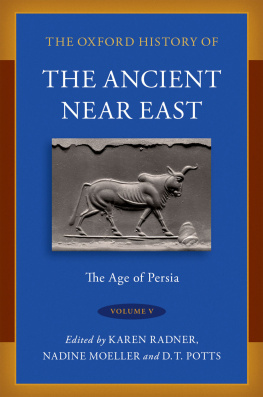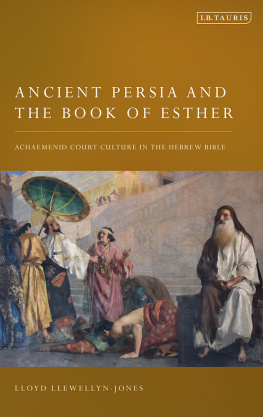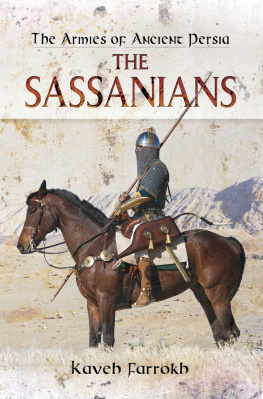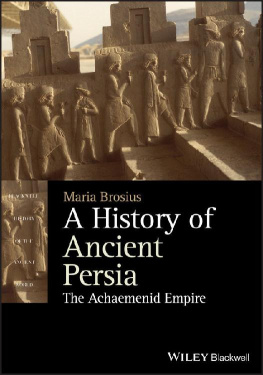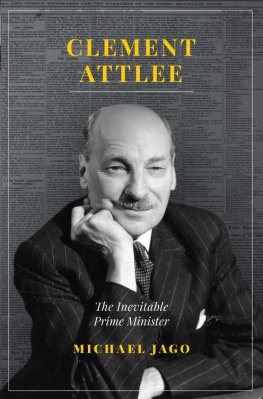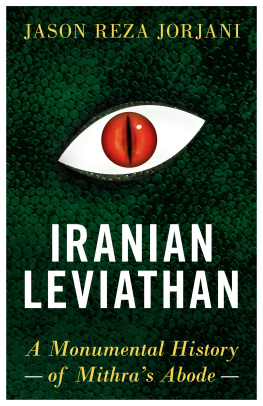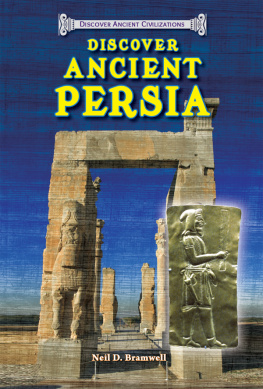THE HISTORY OF CIVILIZATION
ANCIENT PERSIA AND
IRANIAN CIVILIZATION
THE HISTORY OF CIVILIZATION
General Editor C. K. Ogden
The History of Civilization is a landmark in early twentieth Century publishing. The aim of the general editor, C. K. Ogden, was to "summarise in one comprehensive synthesis the most recent findings and theories of historians, anthropologists, archaeologists, sociologists and all conscientious students of civilization," The History, which includes titles in the French series L'Evolution de I'Humanit, was published at a formative time in the development of the social sciences, and during a period of significant historical discoveries.
A list of the titles in the series can be found at the end of this book.
First published in 1927 by Routledge, Trench, Trubner
Reprinted in 1996, 1998 by Routledge
2 Park Square, Milton Park,
Abingdon, Oxon, OX14 4RN
&
270 Madison Ave,
New York NY 10016
Transferred to Digital Printing 2008
1996 Routledge
All rights reserved. No part of this book may be reprinted or utilized in any form or by any means electronic, mechanical, or other means, now known or hereafter invented, including photocopying and recording, in any information storage or retrieval system, without permission in writing from the publishers.
British Cataloguing in Publication Data
ISBN: 0-415-15590-8
ISBN Eastern Civilization (10 volume set): 0-415-15614-9
ISBN History of Civilization (50 volume set): 0-415-14380-2
Publishers Note
The publisher has gone to great lengths to ensure the quality of this reprint but points out that some imperfections in the original may be apparent
Iranian Civilization
THE series L'volution de l'humanit is based upon the idea, which is being more and more accepted, that there is a unity in the history of the groups of mankind. If it cannot be stated that all have one same origin (nor, indeed, can the contrary be affirmed), their solidarity, which is manifest to-day, is seen to be very ancient. However widely separated they might- be, there were relations between them which were often close.
I do not think, interesting though the idea may be, that it would be in conformity with a truly scientific interpretation to place on the same footing, in a history of the " world every group which has inhabited the earth. It is with reference to the logical factorthe essential element, which is thoroughly explanatorythat all the matter of history should be arranged, as soon as one has a clear view of historical causality and all its articulations.
In conformity with this principle, after describing the great collective and in large part anonymous work which , in the course of prehistory, laid the foundations of human civilization, we have reviewed the great civilizations, differentiated from one another, which constituted the highroad of human progress; we have seen the formation of the empires which sought to bring human resources together in combinations in which life became higherbut for a very limited number of individuals, for brilliance of " civilization " does not necessarily correspond to the happiness of the greatest number.
Before we continued our study of the Mediterranean world, namely, the countries and groups in which the special conditions of progress to which we have drawn attention came together, it was necessary to take a survey of the great masses of men which Rome left outside, on the fringe of her immense empire. One volume for it is not enough to have caught an occasional glimpse of them when reading of their relations with their Eastern neighbours or of drives to the West. We must define the part which they played; if it was less brilliant than that of the Greeks or Romans, it was, all the same, considerable. That is what M. Huart has done in this book , with the authority of his great knowledge.
One has to make an effort to realize what was, as it were , the function of Iran in antiquity. To-day the country is off the great roads of the world; once it was the connecting link between the Far East and the West; it saw peoples migrating, and afterwards armies on the march, flowing over the high plateaus, between the Caspian Sea and the Gulf of Oman; it was a highway and crossroads of the peoples, where civilizations met.
The climate of Persia is as peculiar as its positionsouthern by latitude, but cool or cold by its height above the sea. The country is dominated by snowy peaks; much of it is barren dessert; but where watercourses bring fertility, before ending in salt lakes or vanishing in the sand, it offers delightful oases. In these favoured places, where cooling nights follow days of radiant light in a marvellously limpid atmosphere, " trees, plants, birds , the spring have the same look as in our own country." It is the land of the rose and the nightingale, of perfumes and songs; and its gardens have given their name to Paradise. The enchanted oasis explains all the voluptucrus side of Iranian civilization, while the rugged mountains sent down into the plains men of clean morals and manly virtue.
In the course of this flow of peoples, bringing others in their wake, of the making and undoing of states of which we have read in earlier volumes, the land which enjoyed the very special conditions which I have mentioned received a population whose originwe cannot speak of race
Under three successive dynasties, one of which was foreign, among changes of fortune born of its very ambition, this empire developed a composite civilization into which Egypt, Phnicia, Assyria, Chaldea, and GreeceAsia, Africa, and Europeintroduced various elements; yet it had a character of its own. It received much from outside; but the collective individuality which we are discussing assimilated what it borrowed. Amid all this " reception " of different elements, its essential characteristics were maintained. Victorious or vanquished, and even after the period described in this volume, when the history of Persia was for the time being blended with that of the Arabs, Persia continued to be herself, and exercised influence in virtue of her inmost nature .
In the history of the world Persia is a factor of real importance, and because it has added something of value, which I shall discuss , to the logical development of mankind.
In material civilization, in the arts, Persia was chiefly indebted to Mesopotamia. It underwent the influence of Assyria while it was subject to that country, and Assyria, as we know, was profoundly influenced by Chaldea ; Babylon created Oriental art. But Persia borrowed on all sides. " The ruins of Persepolis introduce us to a composite art, born of the royal fancy, which had gathered into an artificial, powerful unity every artistic form which had struck it in the provinces of Assyria, Egypt, and Asiatic Greece; it was the caprice of an omnipotent dilettante with a love of size."




